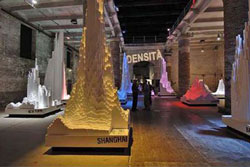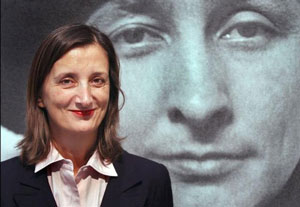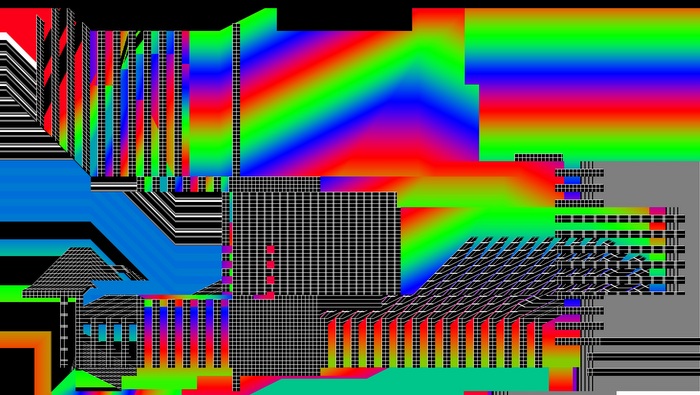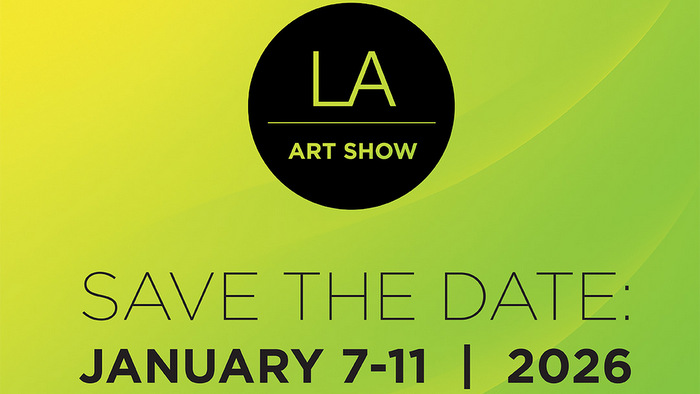Around 30 countries from Latin America and the Caribbean will be represented in the 54th Venice Biennial (June 4- November 27): Argentina, Brazil, Chile, Costa Rica, Cuba, Mexico, Uruguay, Venezuela, Bolivia, Colombia, Ecuador, El Salvador, Guatemala, Honduras, Nicaragua, Panamá, Paraguay, Peru, Dominican Republic, among others.
 Among pavilions from the host country is that of the Italian-Latin American Culture Institute (IILA) –whose inauguration is scheduled for this Friday June 3 at 13:30 hr, in Isolotto dell’Arsenale, Campo della Tana–. The pavilion will showcase pieces by artists from all over Latin America that portray, through contemporary resources, the 200 years of the region’s independence.
Among pavilions from the host country is that of the Italian-Latin American Culture Institute (IILA) –whose inauguration is scheduled for this Friday June 3 at 13:30 hr, in Isolotto dell’Arsenale, Campo della Tana–. The pavilion will showcase pieces by artists from all over Latin America that portray, through contemporary resources, the 200 years of the region’s independence.
Titled after a verse by Uruguayan poet Mario Benedetti: Entre siempre y jamás (Between always and never)–the exhibition first organized by IILA in 1972 at the invitation of the Biennial– contain works by Leticia El Halli Obeid (Argentina); Narda Alvarado (Bolivia); Neville D’Almeida (Brazil); Sebastian Preece (Chile); Juan Fernando Herran (Colombia); Sila Chanto (Costa Rica); Reynier Leyva Novo (Cuba); Maria Rosa Jijon (Ecuador); Walterio Iraheta (El Salvador); Regina Jose Galindo (Guatemala); Cultural Example of Voodoo Patrimony (Haiti); Adan Vallecillo (Honduras); Julieta Aranda (Mexico); Rolando Castellon (Nicaragua); Humberto Velez (Panama); Claudia Casarino (Paraguay); Fernando Gutierrez (Peru); David Perez Karmadavis (Dominican Republic); Martin Sastre (Uruguay) and Alexander Apostol (Venezuela).
Due to the IILA’s profile, the display includes as well European artists who deal with the same topic: Alberto de Agostini (Italy), Gianfranco Foschino (Italy/Chile), Christine de la Garenne (Germany/Venezuela), Olaf Holzapfel alongside Teresa, Mirta, Dionisia, Noelia and Luisa Gutierrez from the indigenous community of Wichi (Germany /Argentina) and Bjørn Melhus (Norway /Mexico).
 IILA had Patricia Rivadeneira as organizer of the Pavilion, summoned Alfons Hug, as curator of Entre siempre y jamás, and Paz Guevara, associate curator together with Rivadeneira. Hug was a curator at the São Paulo Biennial in 2002 and 2004, and at the End of the World Biennial of Ushuaia, in 2009. He currently lives in Rio de Janeiro and is the director of the Goethe-Institut.
IILA had Patricia Rivadeneira as organizer of the Pavilion, summoned Alfons Hug, as curator of Entre siempre y jamás, and Paz Guevara, associate curator together with Rivadeneira. Hug was a curator at the São Paulo Biennial in 2002 and 2004, and at the End of the World Biennial of Ushuaia, in 2009. He currently lives in Rio de Janeiro and is the director of the Goethe-Institut.
For six months, the Biennial opens spaces in several points of the city for side exhibitions, training activities such as the “Biennale Sessions” run by university students majoring on different artistic disciplines, and the series of lectures “Meetings on Art”.
This edition of the event boasts a record-number of participating countries: 88 (eleven more than in 2009), some of them attending for the first time like Haiti, Andorra, Saudi Arabia, Bahrain and Bangladesh.
For this year, the Biennial’s curator Bice Curiger invited 82 artists from all over the world, among them 32 are women, one third of which are under 35 years of age. The slogan “ILLUMInazioni-ILLUMInations” represents “a spirit that goes beyond national boundaries in a time when artists have a polyhedral identity,” said the Swiss historian, Curiger.
 “ILUMInations highlights intuitive comprehension and the illumination of the mind caused by the encounter with art and its capacity to sharpen perception tools. While the former biennial underlined constructive creativity, ILUMInations focuses on enlightening experiences, on the epiphanies resulting from intercommunicative intellectual comprehension. ILUMInations echoes as well Age of Enlightenment, bearing witness of the long-lasting vitality of its legacy.”
“ILUMInations highlights intuitive comprehension and the illumination of the mind caused by the encounter with art and its capacity to sharpen perception tools. While the former biennial underlined constructive creativity, ILUMInations focuses on enlightening experiences, on the epiphanies resulting from intercommunicative intellectual comprehension. ILUMInations echoes as well Age of Enlightenment, bearing witness of the long-lasting vitality of its legacy.”
Curiger is worldwide-recognized intellectual. She serves as a curator at the Kunsthaus Zurich in addition to her work as editor. In 1984, she co-founded the prestigious art magazine Parkett, of which she is the editor-in-chief. She has been the publishing director of Tate etc., a magazine published by the Tate Gallery of London, since 2004.
Related Publications

Zero 10 at Art Basel Miami Beach: A New Space for the Digital Era of Art
December 03, 2025













